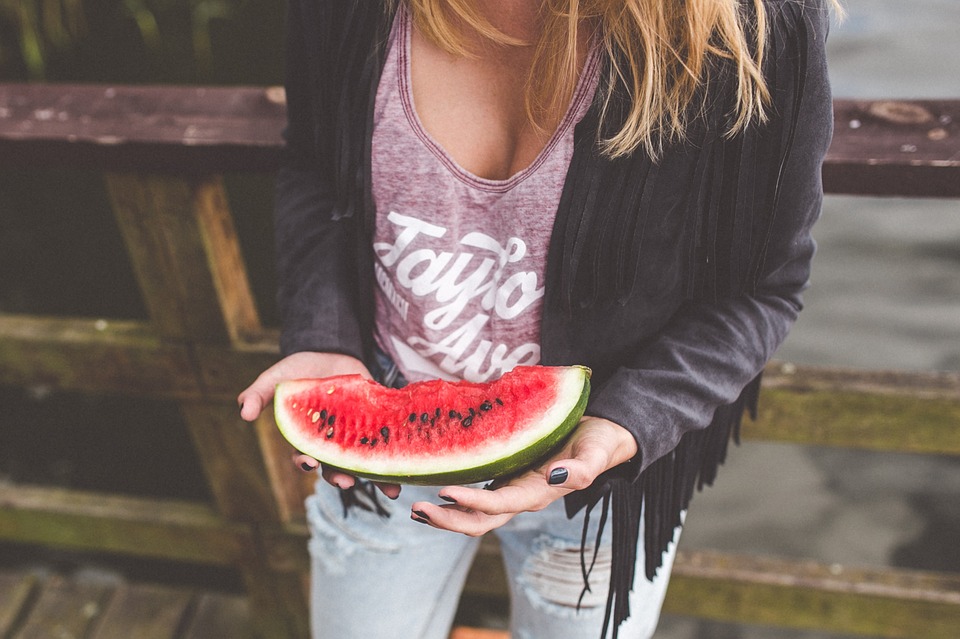Watermelon is a type of vine like flowering plant that originated in Southern Africa. It is best known for its edible, fleshy and juicy fruit, which is technically a berry. The fruit has a dark green, smooth rind with yellow spots and a flesh, which ranges from pink to red in color.
It is well known that watermelon is rich in water and fiber with 91% water content. But here are some not so common facts about watermelons:
- Fruit can be eaten cooked or raw. It is an ideal content for a fruit basket.
- Watermelon can be classified as both a fruit and a vegetable.
- It is a fruit as it has a refreshing sweet flavour, grows from seeds and is loosely regarded as a type of melon. But technically the fruit is a berry called as pepo.
- It is a vegetable because it belongs to the same family as pumpkin, squash and cucumber. It is also harvested from fields similar to other vine type vegetables.
- Oklahoma has declared watermelon as its official, state vegetable.
- It has content f 91% water and 6% sugar.
- It has high electrolyte and water content that make it in an ideal summer drink. It detoxifies the body and hydrates the skin.
- It is also rich in nutrition. It contains high levels of Vitamin B6 (enhances brain function), Vitamin A (helps eye sight), and Potassium (cures heart disease and maintains heart health). Vitamins C, B1 and manganese content help in combating infections.
- China is the leading producer of watermelons followed by Turkey.
- All parts of the watermelon are edible including rinds and seeds. Rinds can be cooked, stewed or pickled. Seeds can be dried and powdered.
- There are over 1200 varieties of watermelons which come in colours ranging from green and yellow to red and orange.
- Japanese farmers have been growing cube shaped watermelons, which are highly priced due to their novelty value.
- In US, July is the National Watermelon month because it is hot summer and also the peak season for harvest.
- Among melons, watermelon leads the pack in terms of consumption (next are cantaloupe and honeydew). Watermelons are also cousins to squash, pumpkin and cucumber.
- Watermelon contains more Lycopene than tomatoes: Lycopene is a strong Carotenoid antioxidant, which provides red or pink colour to fruits. It helps reduce risk of strokes and has anti-cancer properties.
- Watermelon is also rich in an amino-acid called as Citrulline. This protects against muscle pain and stress. According to a study, some men who drank natural watermelon juice prior to working out, experienced lowered muscle soreness, 24 hours later as compared to others who drank a placebo.
- Water melon rinds and seeds are edible: Fr a refreshing drink, put watermelon rind and lemon in a blender. Not only is the rind rich in blood building and health enhancing compounds, but it contains higher quantity of citrulline than the pink flesh.
- To choose the best watermelon, pick one that is heavy for its size, one which has a dull top and smooth rind, and one which creates a hollow, bass sound on thumping.
A watermelon is thus a delicious addition to a basket of fruit and is rich in nutrition. As such, you can gift this basket to a loved one, who is recuperating from an illness or just to cheer up someone who is down in the dumps.

